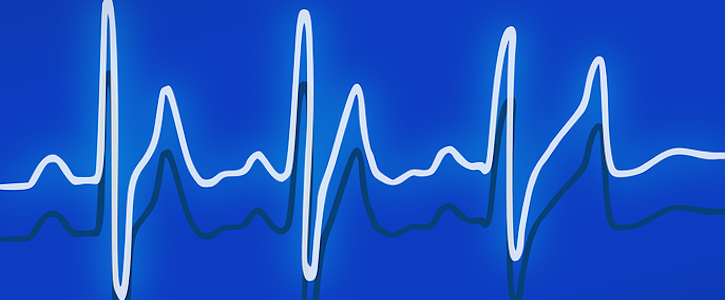AI-Enabled ECG Accurate in Detecting A-Fib, Mayo Clinic Study Finds
The AI model correctly identified subtle patterns of A-fib with 90% accuracy.

A single artificial intelligence (AI)-enabled electrocardiogram (ECG) can detect signs of atrial fibrillation (A-fib) that are present during normal sinus rhythm with an overall accuracy of 79.4%, according to the findings of a study published in The Lancet.
The single ECG identified A-fib with an area under the receiver operator curve of 0.87 and had a 79% sensitivity and 79.5% specificity. From all the ECGs acquired during the first month of the study, the area under curve was 0.90 with an 82.3% sensitivity, 83.5% specificity and 83.4% overall accuracy.
“An (ECG) will always show the heart’s electrical activity at the time of the test, but this is like looking at the ocean now and being able to tell that there were big waves yesterday,” said Paul Friedman, M.D., chair of the cardiovascular medicine department at Mayo Clinic. “AI can provide powerful information about the invisible electrical signals that our bodies give off with each heartbeat — signals that have been hidden in plain sight.”
The investigators’ primary outcome was the ability of the AI-enabled ECG to identify patients with A-fib using a standard 12 lead, 10 second ECG recording during sinus rhythm. A secondary analysis determined whether the use of more than one ECG improved the area under the curve for the detection of a history of A-fib.
Researchers from Mayo Clinic used approximately 450,000 ECGs of more than 7 million in the Mayo Clinic digital data vault. The research team trained the AI to identify subtle differences in a normal ECG that would indicate changes in heart structure caused by A-fib. Without using AI, the changes are not detectable, according to the investigators.
The researchers tested the AI on normal-rhythm ECGs from more than 36,000 patients — more than 3,000 had A-fib. The model correctly identified subtle patterns of A-fib with 90% accuracy.
AI-guided ECGs could direct the right treatment for diseases caused by A-fib, including stroke, heart failure and other cardiovascular disease, even without symptoms. And the technology can be processed using a smartphone or watch, which would make it readily available on a large scale.
“When people come in with a stroke, we really want to know if they had (A-fib) in the days before the stroke, because it guides the treatment,” Friedman said.
A-fib is considered a global epidemic due to the increase of prevalence rates. What’s more, A-fib leads to an increased risk of mortality and needs to be detected to prevent comorbidities and death.
“(The authors’) findings will be of clinical importance, especially in identifying silent (A-fib), and may have significant implications for secondary prevention of patients with (embolic stroke with undermined sources) in terms of providing appropriate oral anticoagulation to prevent recurrences of stroke,” Jeroen Hendricks, Ph.D., from the Centre for Heart Rhythm Disorders at the South Australian Health and Medical Research Institute, wrote in a study commentary.
Get the best insights in digital health directly to your inbox.
Related
Risk Prediction Model Helps Identify Risk of Developing Lung Cancer
Model Predicts Cognitive Decline in Patients with Alzheimer's